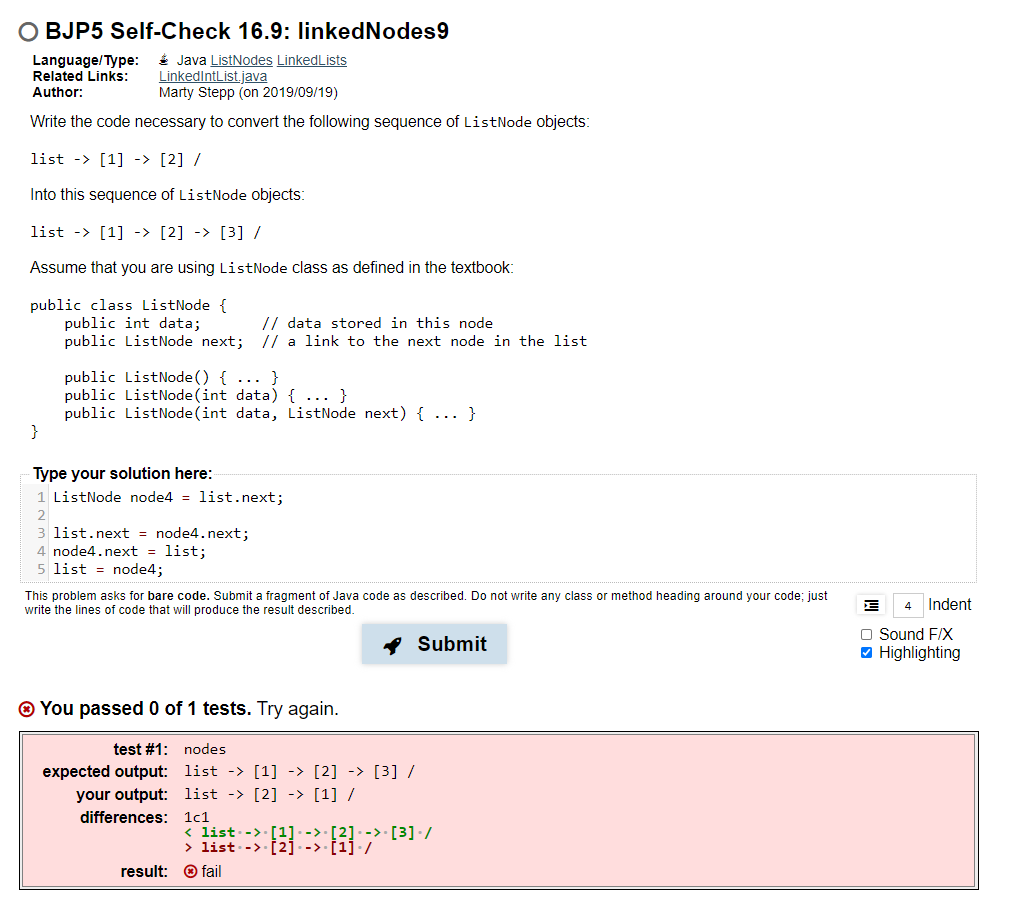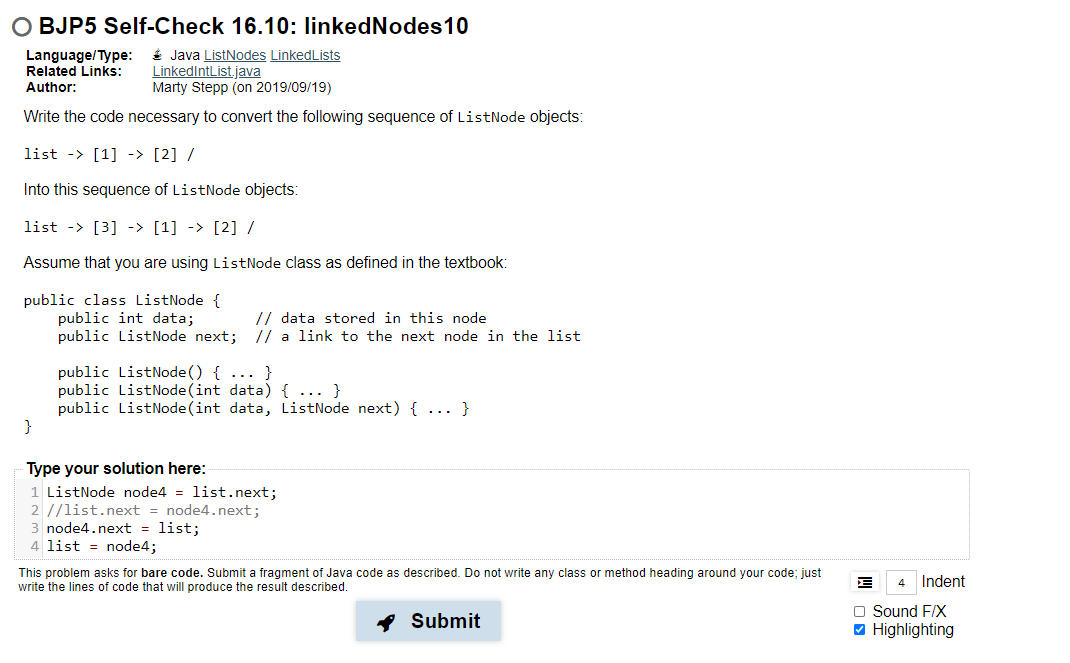Answered step by step
Verified Expert Solution
Question
1 Approved Answer
please provide bare code not the whole program This problem asks for bare code. Submit a fragment of Java code as described. Do not write


 please provide bare code not the whole program
please provide bare code not the whole program
This problem asks for bare code. Submit a fragment of Java code as described. Do not write any class or method heading around your code; just write the lines of code that will produce the result described.
O BJP5 Self-Check 16.9: linkedNodes 9 Language/Type: Java ListNodes LinkedLists Related Links: LinkedIntList.java Author: Marty Stepp (on 2019/09/19) Write the code necessary to convert the following sequence of ListNode objects: list -> [1] -> [2] / Into this sequence of ListNode objects: list -> [1] -> [2] -> [3] / Assume that you are using ListNode class as defined in the textbook: public class ListNode { public int data; // data stored in this node public ListNode next; // a link to the next node in the list public ListNode() { ... } public ListNode(int data) { ... } public ListNode(int data, ListNode next) { ... } } Type your solution here: 1 ListNode node4 = list.next; 2 3 list.next = node4.next; 4 node4.next = list; 5 list = node4; This problem asks for bare code. Submit a fragment of Java code as described. Do not write any class or method heading around your code; just write the lines of code that will produce the result described. 4 Indent f Submit O Sound FIX Highlighting You passed 0 of 1 tests. Try again. test #1: nodes expected output: list -> [1] => [2] -> [3] / your output: list -> [2] -> [1] / differences: 1c1 -> ] / > list -> result: fail :[2] =>: {]:7 [3];/ OBJP5 Self-Check 16.10: linkedNodes 10 Language/Type: Java ListNodes LinkedLists Related Links: LinkedintList.java Author: Marty Stepp (on 2019/09/19) Write the code necessary to convert the following sequence of ListNode objects: list -> [1] -> [2] / Into this sequence of ListNode objects: list -> [3] -> [1] => [2] / Assume that you are using ListNode class as defined in the textbook: public class ListNode { public int data; public ListNode next; // data stored in this node // a link to the next node in the list public ListNode() { ... } public ListNode(int data) { ... } public ListNode (int data, ListNode next) { ... } } Type your solution here: 1 ListNode node4 = list.next; 2//list.next = node4.next; 3 node4.next = list; 4 list = node4; This problem asks for bare code. Submit a fragment of Java code as described. Do not write any class or method heading around your code; just write the lines of code that will produce the result described. E 4 Indent f Submit O Sound FIX Highlighting O BJP5 Self-Check 16.11: linkedNodes 11 Language/Type: Java ListNodes LinkedLists Related Links: LinkedIntList.java Author: Marty Stepp (on 2019/09/19) Write the code necessary to convert the following sequences of ListNode objects: list -> [1] -> [2] / temp -> [3] -> [4] / Into this sequence of ListNode objects: list -> [1] -> [3] -> [4] -> [2] / (It does not matter what temp refers to at the end of your code.) Assume that you are using ListNode class as defined in the textbook: public class ListNode { public int data; public ListNode next; // data stored in this node // a link to the next node in the list public ListNode() { ... } public ListNode(int data) { ... } public ListNode(int data, ListNode next) { ... } } Type your solution here: 4 5 This problem asks for bare code. Submit a fragment of Java code as described. Do not write any class or method heading around your code; just write the lines of code that will produce the result described. Indent Submit Sound FIX HighlightingStep by Step Solution
There are 3 Steps involved in it
Step: 1

Get Instant Access to Expert-Tailored Solutions
See step-by-step solutions with expert insights and AI powered tools for academic success
Step: 2

Step: 3

Ace Your Homework with AI
Get the answers you need in no time with our AI-driven, step-by-step assistance
Get Started


